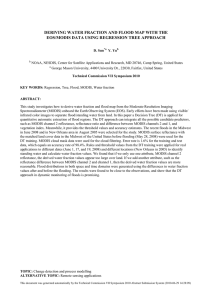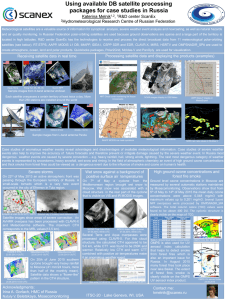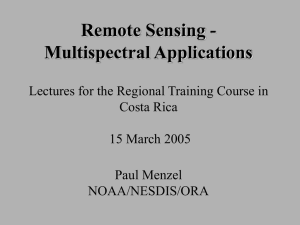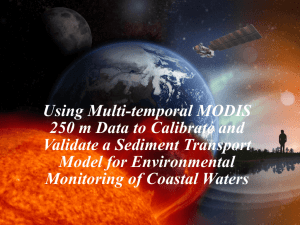Snowmelt runoff, eScience, and the end of stationarity
advertisement
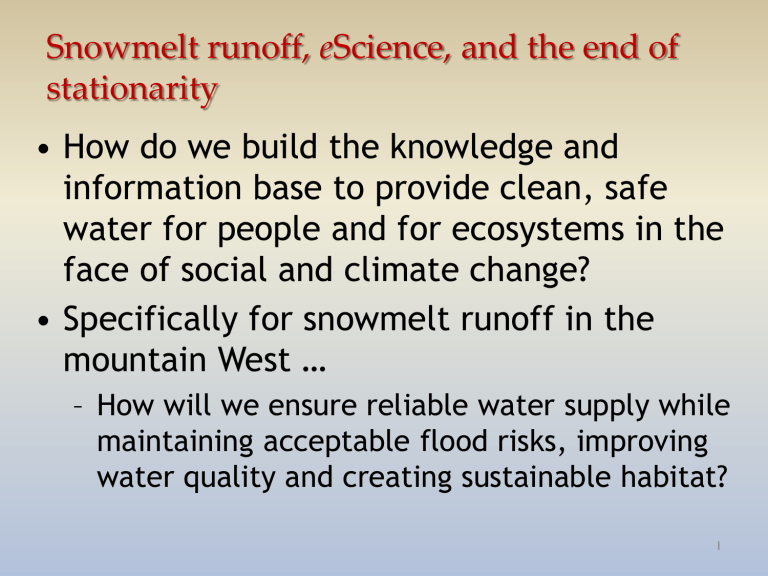
Snowmelt runoff, eScience, and the end of stationarity • How do we build the knowledge and information base to provide clean, safe water for people and for ecosystems in the face of social and climate change? • Specifically for snowmelt runoff in the mountain West … – How will we ensure reliable water supply while maintaining acceptable flood risks, improving water quality and creating sustainable habitat? 1 Manual measurement of SWE (snow water equivalent) 2 Automated measurement with snow pillow 3 A changing western snowpack? Less snow? Earlier melt? Service, R. F., As the West goes dry, Science, 20 Feb 2004 4 3500 < -1%/yr -1% to -0.25%/yr ±0.25%/yr 0.25% to 1%/yr elevation, m 3000 2500 2000 1500 36 37 38 39 latitude, deg 40 41 42 5 100% Snow 100% Vegetation Pure endmembers, 01 Apr 2005 100% Rock/Soil MODIS image 6 Model structure for MODIS snow-covered area and albedo (38 images/day × 300 days) MODIS cloud mask (48 bits) MODIS 7 land bands (112 bits) Watershed info Snow fraction MODIS snow cover and grain size Topography Solar zenith, azimuth Provenance albedo Basin mask 7 MODIS view angles MODIS quality flags RMS error Veg fraction Soil fraction Quality flag Shade fraction Open water fraction 8 Snow-covered area and albedo, 2004 Snow Covered Area Albedo 9 = X X [1– ] 10 The Data Author’s Perspective: from data creation to data curation • No “standard” environmental science computing environment – commercial packages (ArcGIS, IDL, MATLAB, …) Collect Present Store Analyze Search – public packages/models (MM5, MODTRAN, …) – locally-developed codes (C, Fortran) • How do we get these programs to – communicate – cooperate without rewriting? Retrieve • And what about the Cloud? – “graduated outsourcing” 11 So what do I want so I can do better? • Easy integration and data quality checks for a variety of datasets – Surface measurements and remote sensing images – which are stored at different places in different formats • Easy integration of tools – SQL Server, MATLAB, IDL, my own low-level code, and even code for which I don’t have source • A Cloud that looks like my laptop/desktop • A good way to store/access/view multidimensional data (which are sometimes sparse) • A nice, geographic UI to get to the data • Ability to format output for a variety of analysis tools (e.g, GeoTIFF, OpenDAP) 12

